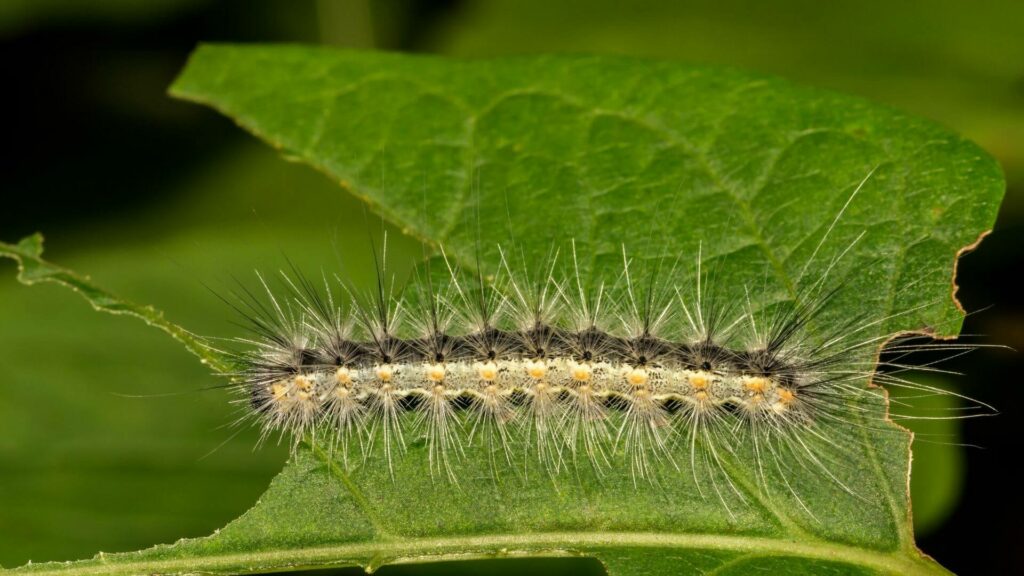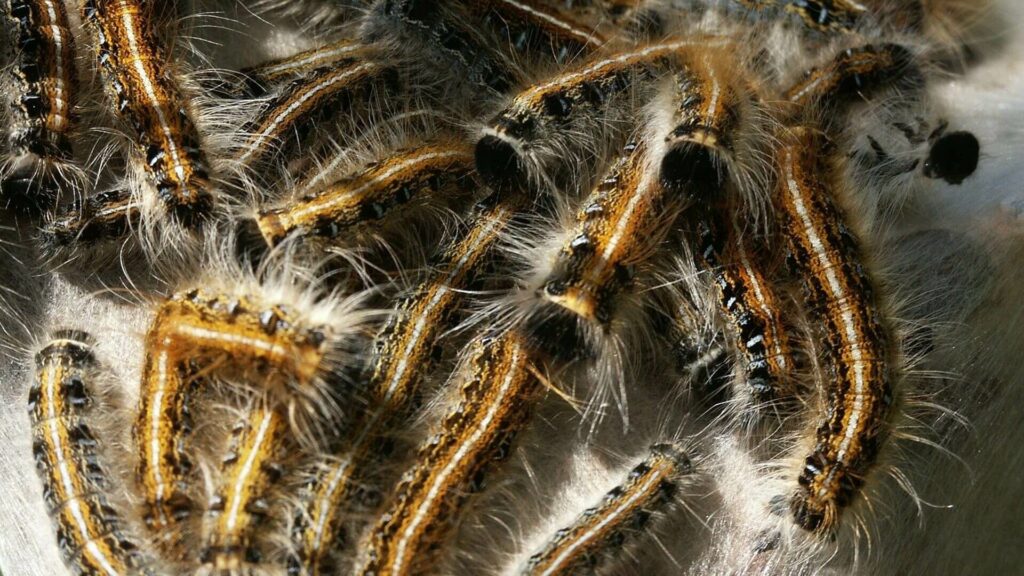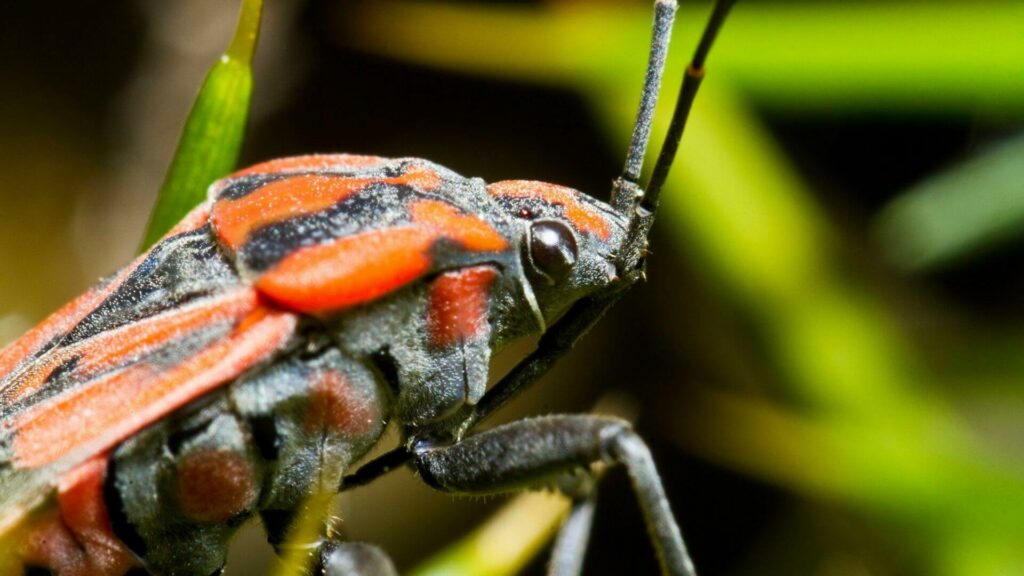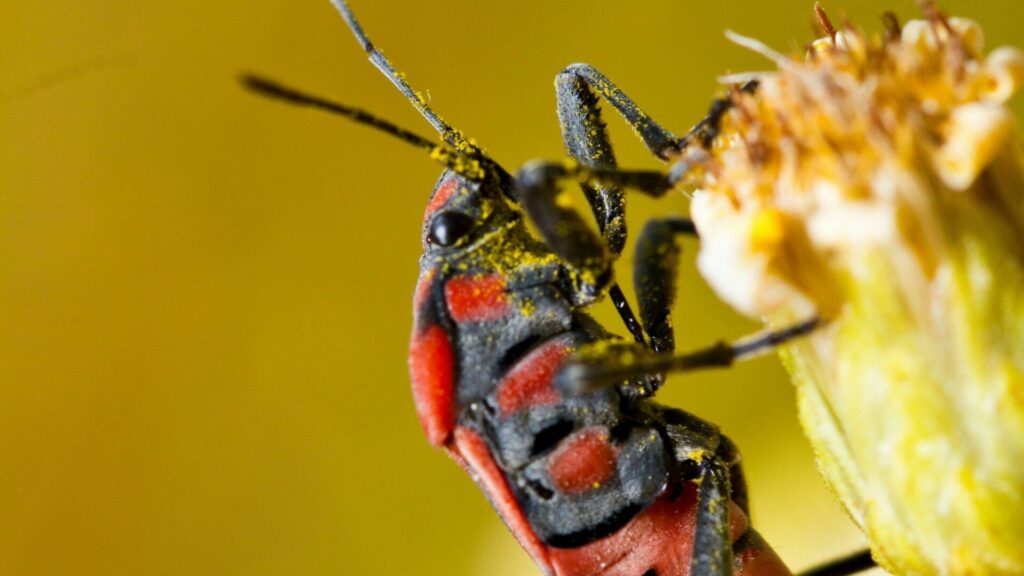It’s common for lawn pest damage to go overlooked until it’s too late. The browning and ugly appearance of your lawn may have you wondering whether grass-eating insects have turned it into a 24/7 banquet.
It’s true that there are a lot of lawn pests in Pennsylvania that might harm your landscape. For example, certain grass-eating insects might cause your lawn to get wilted or brown and die. So, it’s critical that you treat these problems as such.
Chinch bugs and sod webworms, two of the most frequent lawn insects that consume grass here in Pennsylvania, are the second most common lawn pests. The more you know about these lawn pests, the better decisions you can make to keep them from ruining your grass.
Sod Webworms
 Sod webworms, often known as “lawn moths,” are a common problem in Pennsylvania lawns. Adult sod webworms are reddish-brown moths that can grow up to 3/4 of an inch long. The adult has a snout-like protrusion on the top of its head.
Sod webworms, often known as “lawn moths,” are a common problem in Pennsylvania lawns. Adult sod webworms are reddish-brown moths that can grow up to 3/4 of an inch long. The adult has a snout-like protrusion on the top of its head.
Many types of grass are preyed upon by these lawn pests, including the following.
-
Kentucky Bluegrass
-
Perennial Ryegrass
-
Tall Fescue
Life Cycle of a Sod Webworm
Up to 200 eggs can be laid by a female sod webworm, and these eggs develop into young larvae in 7 to 10 days. During the month of July and the beginning of August, larvae eat and pupate. Second-generation adult moths are active in late July and early August. Once more, eggs are produced, and the resulting larvae eat until the end of September before hibernating for the winter. These grass pests can reproduce many times a year, resulting in multiple generations each year.
Finding These Pests on Your Lawn
Webworms hide throughout the day and mostly eat at night when they are most active. Brown spots the size of a baseball might indicate damage to the lawn by these pests. July and August are the months when the most harm is done. Insect larvae eat leaves and stems slightly above the top of the plant. As it matures and feeds, the brown spots become more prominent.
Lawn Pest Management for Sod Webworms
 The larval populations of sod webworms may need to be suppressed while they are actively eating if you have an infestation. For future lawn pest control, use preventative treatment each year at a period when the bugs are most active. A professional should evaluate your lawn at the very least if you’ve had a problem with these pests in the past. In the event that they have any more advice on how to deal with this pest during the current season, they can let you know.
The larval populations of sod webworms may need to be suppressed while they are actively eating if you have an infestation. For future lawn pest control, use preventative treatment each year at a period when the bugs are most active. A professional should evaluate your lawn at the very least if you’ve had a problem with these pests in the past. In the event that they have any more advice on how to deal with this pest during the current season, they can let you know.
Chinch Bugs
 It’s possible that you won’t see the white wings or the blackish gray body of these lawn pests, since they are only about a ⅙ of an inch long. You’ll see the harm that these lawn-eating insects may wreak as they feed on the grass’s surface. An infestation might bring on as many as 200 insects per square foot of turfgrass.
It’s possible that you won’t see the white wings or the blackish gray body of these lawn pests, since they are only about a ⅙ of an inch long. You’ll see the harm that these lawn-eating insects may wreak as they feed on the grass’s surface. An infestation might bring on as many as 200 insects per square foot of turfgrass.
In the Pennsylvanian Wyoming and Lehigh Valleys, Chinch bugs are a common problem because they favor particular kinds of grass:
- Kentucky Bluegrass
- Red Fescue
- Perennial Ryegrass
The Life Cycle of the Chinch Bug
Chinch bugs mature and spend the winter among leaf litter and thick thatch. Until the temperature rises to around 50 degrees, they will remain in one place and begin to reproduce, lay eggs, and disperse. An adult female chinch bug may lay 300 eggs in 40 to 50 days. The nymphs will grow into adults in roughly four to six weeks and hatch.
When the insects are most active, chinch bug damage is most likely to occur. It is, however, more difficult to spot this damage if your grass is always wet because it will take longer for the harm to become apparent.
A poison that may cause the grass to yellow, turn brown, and die is injected by both nymphs and adults of chinch bugs, which eat on lawns and can cause considerable harm.
Finding These Pests on the Lawn
 These lawn pests are particularly prevalent on lawns with thick layers of thatch because of their preference for hiding in such landscapes. They are commonly overlooked because of their modest size and color which helps them blend in with the landscape.
These lawn pests are particularly prevalent on lawns with thick layers of thatch because of their preference for hiding in such landscapes. They are commonly overlooked because of their modest size and color which helps them blend in with the landscape.
People are often made aware of a chinch bug infestation by indicators of lawn damage. If your grass is becoming brown and you suspect an invasion of grass-eating insects, look for chinch bugs during a visual examination. Because chinch bugs will leave a ravaged area, it’s best to do this when the grass is still green on the periphery around the damaged area. Get down on your knees and pull the thatch apart in several places while keeping a careful eye for at least 20 to 30 seconds without moving.
A metal tube can also be used to scout for chinch bugs. The tube (or container) should be put one to two inches into the ground and secured in place. Fill the tube or container with water. In approximately 10 minutes, the chinch bugs will have risen to the top of the water. You can count the number of chinch bugs to get an idea of the population density.
Sun-loving chinch bugs can be seen crawling on driveways, sidewalks, and other hardscaped surfaces on a sunny day as well.
Chinch Bug Lawn Control
One technique to reduce the favorable conditions for chinch bugs is to remove excess thatch and perform lawn aeration to break up compacted soil. If your grass is already infested with chinch bugs, though, you may need professional treatment to eradicate these troublesome insects.
Are You Sure It’s A Surface Feeding Insect?
Despite the fact that chinch bugs and sod webworms are two of the region’s most frequent lawn pests, there are many more. Insect damage can occasionally be mistaken for damage caused by something else. Damage from chinch bugs and sod webworms, for example, might seem like signs of parched grass.
This is why having a lawn care expert come out on a regular basis is so beneficial. Insects, diseases, and environmental conditions may all be detected early by a lawn care specialist, who can then choose the best course of action for the situation. To ensure that your lawn doesn’t become a 24-hour buffet for lawn pests, hire a lawn care specialist like Turfcor today!